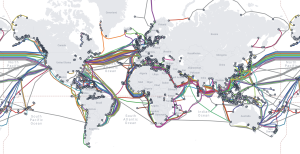GEO Satellites: Unlocking the Power of Geostationary Orbit
GEO satellites, or Geostationary satellites, are a type of satellite that orbits the Earth at an altitude of approximately 36,000 kilometers, allowing them to remain stationary relative to a fixed point on the planet. This unique characteristic makes GEO satellites ideal for a variety of applications, including communication, navigation, and weather forecasting. In this article, we will delve into the world of GEO satellites, exploring their history, technology, and uses.
GEO satellites have been in use for several decades, with the first Geostationary satellite, Syncom 2, launched by NASA in 1963. Since then, numerous GEO satellites have been launched, providing a wide range of services, including television broadcasting, telecommunications, and meteorological observations. The geostationary orbit allows GEO satellites to maintain a fixed position in the sky, making them ideal for providing continuous coverage of a specific region.
How GEO Satellites Work
GEO satellites work by transmitting and receiving signals to and from Earth stations, which are typically equipped with large antennas and transceivers. The signals are transmitted to the satellite, which then relays them back to Earth, allowing for communication between two distant points. The geostationary orbit ensures that the satellite remains in a fixed position, allowing for continuous communication and minimizing the need for complex tracking systems.
The technology behind GEO satellites is complex and involves a range of systems, including propulsion, power, and communication. The satellites are typically equipped with solar panels, which provide the power needed to operate the satellite’s systems. The propulsion system, which includes thrusters and fuel, is used to maintain the satellite’s position and altitude. The communication system, which includes transponders and antennas, is used to transmit and receive signals.
Applications of GEO Satellites
GEO satellites have a wide range of applications, including communication, navigation, and weather forecasting. In the field of communication, GEO satellites are used to provide television broadcasting, telecommunications, and internet connectivity. They are also used for navigation, providing location information and timing signals for GPS and other navigation systems.
In the field of weather forecasting, GEO satellites are used to monitor the weather and climate, providing images of clouds, precipitation, and other weather phenomena. They are also used to track hurricanes, typhoons, and other severe weather events, providing vital information for emergency responders and meteorologists.
Benefits of GEO Satellites
The benefits of GEO satellites are numerous and significant. They provide global coverage, allowing for communication and navigation services to be provided to remote and underserved areas. They also provide high-bandwidth communication, enabling the transmission of large amounts of data, including video and audio.
GEO satellites are also relatively low-cost, compared to other types of satellites, making them an attractive option for governments and private companies. They are also relatively easy to launch and deploy, reducing the complexity and risk associated with satellite launches.
However, GEO satellites also have some limitations and challenges. They are susceptible to interference from other satellites and terrestrial systems, which can affect their performance and reliability. They are also subject to the risks of space weather, including solar flares and cosmic radiation, which can damage their electronics and systems.
In conclusion, GEO satellites play a vital role in modern communication, navigation, and weather forecasting. Their unique characteristics, including their geostationary orbit and high-bandwidth communication capabilities, make them ideal for a wide range of applications. While they have some limitations and challenges, the benefits of GEO satellites far outweigh the costs, making them an essential part of our modern technological infrastructure.


